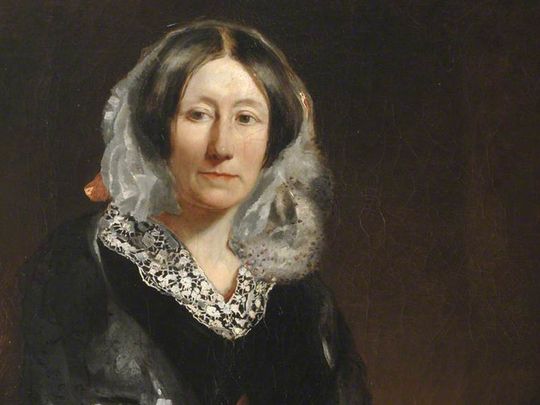
Every day, Scottish mathematician Mary Somerville would wake up before dawn, and spend a couple of hours with Isaac Newton’s work, before diving into the hustle of the day. She was a mother of four and managed a bustling household, even as her thoughts turned towards science.
Click start to play today’s Spell It, where we learn about a woman who demanded ‘more’ from society than it was probably ready to give.
In her memoir, Somerville described the burden working mothers carried in the 18th and 19th centuries, which perhaps resonates with many, even today: “A man can always command his time under the plea of business; a woman is not allowed any such excuse.”
Still, that didn’t stop her. Somerville grew up as a curious child, ready to devour anything to do with mathematics. She spent the day painting and playing piano, as proper young women of her time were supposed to do, but at night, she stayed up to read Euclid. Her parents realised what she had been doing when they discovered their diminishing household candle supply, and promptly confiscated her candles, according to a November 2018 essay in the US-based reading record website The Marginalian.
But Somerville was undeterred. She had already memorised the first six books of Euclid and spent her nights immersed in mathematics, its theories and revelations.
Even though she was bright and determined, the era she lived in didn’t support women’s educational endeavours. It was only when Somerville turned 46 years old that she published her first scientific paper, which was a study of the magnetic properties of violet rays. Her paper impressed the scientific community and earned her praise from the inventor of the kaleidoscope, Sir David Brewster, who called her “the most extraordinary woman in Europe – a mathematician of the very first rank with all the gentleness of a woman”.
Somerville’s next, defining opportunity came in the form of Lord Henry Brougham, who was then an influential lawyer and politician, and the founder of the newly established Society for the Diffusion of Useful Knowledge. He was so impressed by Somerville, he requested that she translate a mathematical treatise by Pierre-Simon Laplace, who was considered the ‘Newton of France’.
Somerville took on the project, not fully understanding how long it would take her to complete it – it took months, then years. Somerville had to support herself in the meantime, so she took on work as a mathematics tutor to the children of the wealthy. You might recognise one of her students, a little girl named Ada, who would grow up to be the world’s first computer programmer (Somerville is the one who introduced her to ‘the father of the computer’ Charles Babbage, and set her on the path to genius).
Finally, when her project was done, Somerville’s work inspired awe. The Mechanism of the Heavens, which she published in 1831, wasn’t just a translation, it expanded ideas, made it comprehensible to lay readers, and popularised science like it had never been done before.
She received accolades from the scientific community, and her book was an instant success.
In 1834, Somerville published her next major treatise, On the Connexion of the Physical Sciences, which elegantly weaved together the fields of astronomy, maths, physics, geology and chemistry. It became one of the bestselling books of the century, earning her admission into the Royal Astronomical Society as one of two first women to be admitted into the venerable institution.
Months after Connexion was published, English polymath William Whewell wrote a review of her work, in which he coined the word ‘scientist’ to refer to Somerville. Until that point, the phrase used for people making scientific inquiries, was ‘man of science’. Since it couldn’t be applied to a woman, and Somerville synthesised ideas from a range of disciplines, he unified her position as mathematician, geologist, physicist and chemist into one word: scientist.
She remains known today as a pioneering woman scientist, who had an uncommon gift of creating clarity from complex concepts.
What do you think of Mary Somerville’s feats? Play today’s Spell It and tell us at games@gulfnews.com.



